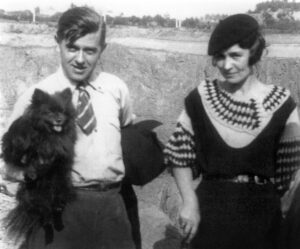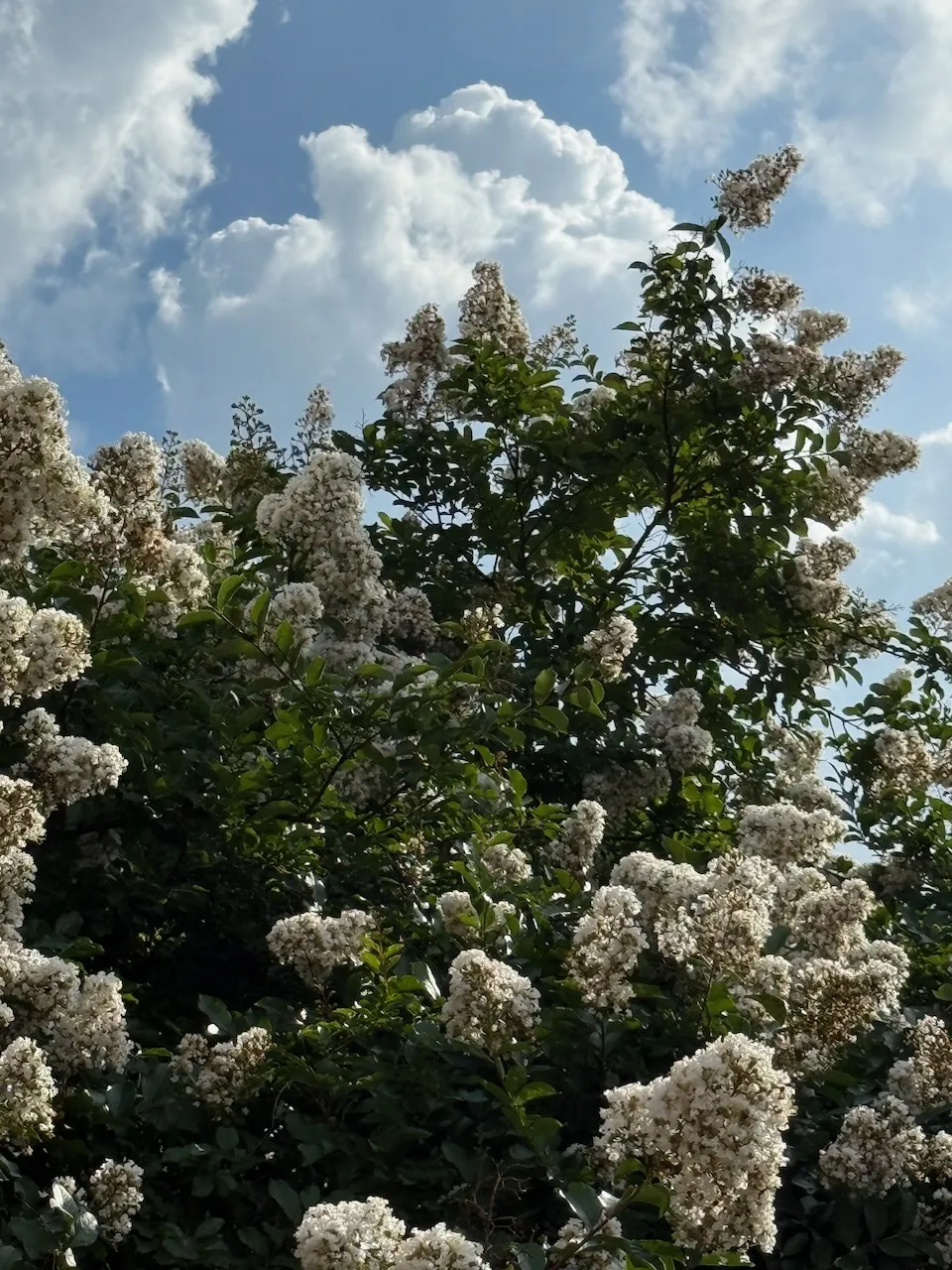John Paul Davis
Newsletter
Five Things I Learned About Writing from Paul Simon's René and Georgette Magritte with their Dog After the War
We’ve been listening to a lot of Paul Simon this week in our little Bronx apartment, inspired as we have been, by having the good fortune to get to see him live at the Beacon Theatre here in New York. It was easily one of the most beautiful rock concerts I’ve ever attended; Simon is 83, and his age in this case is an asset, lending him seven decades of experience in performance and in designing a concert. His voice is obviously not as strong as it once was, and it was never a powerful instrument, but like later-career Johnny Cash, Simon has learned how to use that as an advantage, resulting in a show that felt so immediate, intimate and vulnerable that both my wife and I were moved to tears at different points.
I have been a big fan of Paul Simon’s since high school; at the height of my generationally-on-brand obsession with grunge and hip-hop, a friend passed me a copy of Graceland, then only 2 years old, in first-period art class, and I was immediately taken with the adventurous approach to music, Simon’s embrace of other musical traditions (thanks to my stepmom’s interest, I grew up listening to World Cafe on NPR, and so had already heard lots of African and Cajun music, both which feature heavily on Graceland). And the lyrics! One could argue Graceland and its follow-up, (my personal favorite, The Rhythm of the Saints) contain Simon’s finest lyric writing, and as a young poet, I became obsessed with his writing.
Eventually I turned my attention to his back catalogue, which is when I encountered “Rene and Georgette Magritte With Their Dog After The War.” It is a weird little song with a weird long title and it became a favorite of mine. Simon played it as the recent concert, telling the story of its composition; he found an old photo of the painter, his wife and their pet and the caption became the song title, almost as a sort of challenge to himself (he joked in the show - “I saw that title and thought, well, here’s a hit single”).
To say that Simon’s writing in general impacted me as a poet would be an understatement; many of the themes and approaches I have returned to time and again in my writing were inspired at least in part by Simon’s songs, and it struck me this morning that “Rene and Georgette Magritte With Their Dog After The War” exemplifies many of the lessons I learned at Paul’s metaphorical feet. So, since this is the internet, I have collected my observations and present them here, in list format, as is the fashion on the internet these days.

John Paul Davis’s Writing Tips as Learned from Listening to Paul Simon’s “Rene and Georgette Magritte With Their Dog After The War.”
1. You don’t have to write what you know.
Know does a lot of heavy lifting in the mother of all cliches of writing advice, “write what you know.” Writing what I know requires that I know what I know, and it turns out that one of the main reasons I write in the first place is to discover what I know. If things are working well when I write, I know something at the end, and have been surprised to know it, that I did not know, or knew I knew, when I started. In the case of this song, all Simon “knew” was whatever he knew about Magritte’s art, and then, this little snapshot of Magritte’s personal world, his wife and their dog. What he writes in the song is almost pure fabrication, in the sense, that the song does not even attempt to describe the photo that inspired it. To wit: the dog, one of three characters in the title, makes exactly zero appearances in the song outside its mention in the hook, which is the title, word for word. Instead, Simon invents the Magrittes’ inner life, the intimate contents of their marriage, the things they love, enjoy, and hold dear. We are well beyond the realm of knowing, in any common sense of the word, at this point - since this is total fantasy, there’s nothing for Simon to “know,” unless the knowledge is comprised of something other than personal experience or facts, which, I’m contending it is: what is known, at the end of composing the song, is the world of the song itself, wholly created or perhaps discovered by Simon. If you only write what you know, you will, of course, discover very little, so instead, step out into thin air like Wile E. Coyote, and see what happens when you begin to fall.2. Your writing doesn’t have to be factual.
It seems obvious when dealing with narrative that you can make stuff up, because that’s what narrative calls for. But I notice that lots of readers and writers of poetry and first-person songs seem to think that the events and descriptions need to be factual; that is, they are making the very modern mistake of confusing facts with the truth. Your writing needs to be honest, but honestly is not a recitation of facts. Take the chorus of “Rene and Georgette Magritte With Their Dog After The War.” Here is the first iteration of it (it changes a little every time): Easily losing their evening clothes They dance by the light of the moon To the Penguins The Moonglows The Orioles And The Five Satins The deep, forbidden music They’d been longing for René and Georgette Magritte With their dog after the war The list in the middle of the chorus is of doo-wop bands from the 1950s. We don’t know if the Magrittes were fans of doo-wop, or American music at all, but we know Simon was; he’s mentioned it in interviews, featured doo-wop bands as guests on his songs, and wrote an entire Broadway musical that was, among other things, a love-letter to that genre. In fact, much of the detail in the song about the Magrittes’ lives “after the war” sound a lot like Simon’s life in the 1970s -living in lower Manhattan, “dining with the power elite,” “strolling down Christopher Street,” etc, so it’s fair to suspect that Simon, in imagining what life might have been like for the Margittes, imagined them having lives very much like his own. This is what helps the song feel honest, and when he makes guesses - if they did like American pop music then they might have found it was “forbidden” when they lived in Nazi-occupied Brussels in the 1940s - they feel right even if historically anachronistic (doo-wop being most popular in the 1950s). Then there is the fact that the Magrittes never immigrated to the U.S.; they remained Belgian citizens their entire lives, but the song refers to “their immigrant eyes.” None of these factual inaccuracies matter though. No one (I hope) is coming to this song for a history lesson. The inaccuracies are, I believe, a feature, not a bug, because they help take the song’s narrative out of our space-time altogether, a situate them in a parallel universe where the Magrittes live in lower Manhattan and feel nostalgic for the days when they danced to doo-wop music and were in love, which, Simon, in 1980, writing this song, was likely very much feeling, given his tumultuous relationship with Carrie Fisher, which subject occupies much of the album Hearts and Bones, which contains this song. This leads me to my next lesson:3. Writing about other things is a way of writing about yourself.
Simon has written a song whose title suggests we will get a portrait of the Magrittes (and their poor, ignored dog!) but instead we get a portrait of Paul Simon, nostalgic for the music and life of his own past. This is a thing you are totally allowed and encourage to do: write about something else to write about yourself. I imagine Simon just got on the horse and rode, as it were, at first, letting the writing take him where it would take him, then went back in later drafts to craft the lyrics more into the tight form and shape they eventually ended up having. (Later in his career, Simon seems to have relaxed a little as a lyricist, resulting in songs with a lot more free association, playfulness and also humor, but you can see the beginnings of all that in this song). Play is, I think, one of the best things a writer can do. Write the line that doesn’t make sense and see what happens, where it takes you. Had Simon said to himself “The Magrittes were not likely fans of the Five Satins,” and done something more likely, but less fun, then we wouldn’t have this weird and wonderful song that reveals a lot about Paul Simon, that merges lots of things he likes (doo-wop music, the art of Magritte, lower Manhattan, etc), much like Magritte’s own art often collides and intertwines objects that do not, in the real world, go together. Simon pulls this off- writing a tribute to Magritte that contains few facts about Magritte while behaving like a Magritte painting because he’s willing to be playful, and because he’s willing to write a song “about” Magritte that is really a song about Paul Simon.4. Music is a kind of meaning.
One of the things Simon had to contend with writing this song is that the lengthy title that, sung or said in a certain way, has a certain cadence that is not quite, but close to a meter made up of iambs (divided in two, as it is in the official lyrics, we get two lines of seven syllables, an iamb / - / iamb / iamb with the extra syllable being “and” and “dog” respectively). Say it out loud without thinking too hard and you’ll be able to feel the cadence. I wouldn’t be surprised if this is what caught Simon’s attention first - the phrase is musically catchy when simply spoken. That’s great fodder for the hook of a song. Many of my choices in poems are musical first. Though I don’t often compose poetry to go with music, poems have an internal music of their own, and many times key moments in a poem begin as music for me. I am especially attuned to this at the endings of poems. If the final few lines don’t feel right to me musically, that is, if reading them aloud doesn’t give me a satisfying feeling, I’ll be inclined to revise the ending until it does. I’ll even go so far as to say that when it comes to endings, the way the ending few lines sound is often more important to me than what the logical and syntactic content of the lines is - that is, the music has its own meaning which can be more important than the literal meaning of the words. Of course, I often work to have both: the logical content of the words and the music. But sometimes I let a poem have a mysterious or weird ending if doing so makes the music more compelling. Often following the music leads me to discoveries and meanings I couldn’t have come up with otherwise. I feel like perhaps Simon did that here. Consider again “the deep forbidden music they’d been longing for.” The first half scans identically to the first half of the hook. The second half almost does, but is missing its final two syllables, but in the sung performance, that space is filled by Simon holding the note, and therefore the word “for” extra beats, then pausing slightly, before singing the hook, which underscores the sense of longing being described. So: did Simon come up with this line because it fit the meter and also rhymed (for/war)? The next two choruses feature different penultimate lines: The easy stream of laughter Flowing through the air and For now and ever after As it was before In both cases, the meter is the same as in the first chorus, and the singing (holding the note on “air” and “before”) happens, with similar effect. These three sets of lines are the most editorial Simon’s narrator gets in the song, and all of them together provide a kind of progression - first the music is forbidden but longed for, then it is a source of easy laughter and floating (like characters in a Magritte painting!) and finally, we are given a statement of permanence that sounds awfully like a bit of a scared text or a snippet of liturgy, connecting the characters to something timeless. If my armchair theory is correct about how these lines were composed (that Simon was guided first by how they land musically) then being attentive to the music in a poem or a song’s lyrics leads to new, unexpected meaning that can itself bring a kind of transcendence, or, at least, a really cool encounter with the text.5. Sense of humor is a kind of lyricism.
One of my favorite things about Simon’s writing is his sense of humor. He will, in the midst of an otherwise-serious song about serious subject matter, let his characters crack a joke or he’ll go ahead and rely on a pun, or a least a winking reference. Here the sense of humor is most evident in the second recitation of the chorus, where he has a rhyme scheme problem - the penultimate image concludes with the word “air” but it needs to rhyme with “war.” No problem, Simon thinks, the French for “war” is “la guerre,” so sing it French, one of the three languages commonly spoke in Belgium, where the Magrittes lived. So we get “Rene and Georgette Magritte with their dog apres la guerre.” This leads into the verse, which begins lyrically and is sung airily, but concludes thusly: When they wake up they will find All their personal belongings Have intertwined A Magritte joke! Like with the modified second chorus, for the joke to land you’ll need to know something about Magritte’s art, specifically his particular brand of surrealism, where ordinary objects are merged or places in unlikely contexts. But the image isn’t only a joke; it’s also a little bit of magic - the surrealism is happening to Magritte, and it isn’t only magic, it’s also a serious image about a lifelong marriage: their lives have so intertwined that even their belongings have merged. If you’re at all familiar with my poetry, you’ll likely recognize these lessons in my work. If you’re not, well, I have had a few publications in some great journals recently, and also have a podcast for which I read one of my poems a week, and there are also my books, so dig in!Recent Publications:
“Face Time” recently appeared in the excellent Elysium Review, an online journal whose mission is to feature poems of pleasure, delight, wonder and joy. “What Can We Do With A Captured Asteroid?” whose first draft came from a writing prompt by Bianca Stone, recently appeared in Beaver Magazine. “I Become A Radio DJ” recently appeared in the hand-bound print journal No, Dear, whose mission is to feature work by poets living in New York City (there are almost as many of us here as there are rats). Though you’ll have to purchase the issue to read it, you can hear me read it on episode 7 of my podcast. Actually all three of these poems have featured on the podcast this month.Podcast:
Epsiode 5: "Face Time" Epsiode 6: "What Can We Do With A Captured Asteroid?" Episode 7: I Become A Radio DJ" Subscribe: RSS Link | Apple Podcasts | SpotifyMicro-Reviews:
To see them all, check out the section on my website, where you can subscribe to the RSS feed, or peep the hashtag on BlueSky. Here are some of my recent faves: The Last Dinner Party's 2024 album, Prelude to Ecstasy The Beach Boys' 1966 album, Pet Sounds Daniel Lanois's 2014 album, Flesh and Machine The Sundays' 1990 album, Reading, Writing and Arithmetic Nina Simone's 1965 album, I Put A Spell On YouPhotography:
(view all photos)


